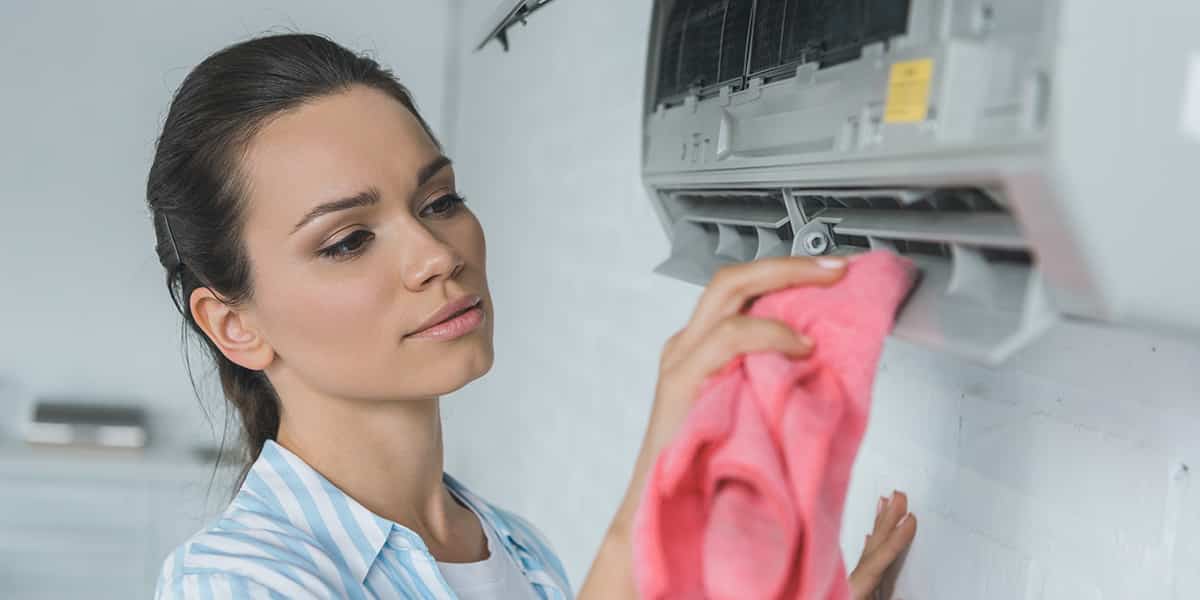
When the summer fully arrives, the last thing you want on your hands is an AC unit that won’t start or cool your home effectively. While AC units spend most of their time straddling between the inside of your home and outdoors, they still need some additional care to withstand the extreme cold temperatures of the winter months. Winterizing your AC proves critical to keeping it running effectively year in and year out.
Luckily, you can follow a relatively short list of easy steps to fully winterize your AC unit, preparing it for brutal cold, ice, and even rust damage, so it’s ready to go once the summer rolls around again.
Need help maintaining your AC year-round? At ABS Air Conditioning company, the premier AC repair experts in Wesley Chapel, we have the tips, tricks, and industry knowledge to help you keep your AC in top shape.
If you keep your AC unit in your window throughout the fall and winter, it can collect ice, water, and other debris, leading to clogging and causing your machine to malfunction or stop running altogether. Naturally, water and ice can result in the rusting and deterioration of some of your AC’s internal parts.
Failing to winterize your air conditioner can lead to costly repairs or even total replacement of your AC down the line.
Ensure you have the proper supplies ready before embarking on the task of winterizing. These include:
Maybe it seems like a no-brainer, but many homeowners who forget to winterize their AC neglect to disconnect it from its power source when they stop using it.
Find the AC electric disconnect switch and flip the switch “off.” This switch will likely rest beneath a metal or plastic lid.
If your machine doesn’t have this switch, switch the breaker at the main panel to “off.” Doing so prevents the AC from accidentally turning on during surprisingly warm days through the colder seasons. To avoid this, turn the AC off at the source and not through the thermostat.
The AC turning on during the winter can lead to water getting pulled into the coils and freezing, causing corrosion or rust damage.
Before you begin to winterize your AC unit, clean any dirt, bugs, debris, branches, or bird droppings from your unit. Make sure to clean the inside and the outside to prevent mold or other growths.
A clogged or dirty filter runs the risk of letting dirt and allergens into your home. While cleaning the filter directly improves air quality, it prevents any leftover dirt from freezing and further clogging your machine in the winter.
If you have an older filter you've already cleaned a few times, replace it with a fresh one. This provides the added benefit of lowering your air conditioner’s energy consumption by 5% - 15%.
First, dry the unit of any excess or leftover moisture from running. Once completed, wrap the unit in a vinyl or plastic cover designed to protect outdoor air conditioners – a tarp works just as well. Cover the top, ensuring your covering is large enough to encompass the entire unit.
Use bungee cords or rope to secure the covering in place. You could also use a brick or piece of plywood to hold the tarp in place from above. Regardless of the method you use, make sure the cover can withstand wind, rain, and other elements.
Covering your AC prevents ice from forming on condenser coils, protects the unit from snow accumulation, and keeps the condenser from collecting debris. All this amounts to the unit running smoother and cleaner in the spring.
In warmer climates, you may want to skip this step. If your AC doesn’t run the risk of freezing, the tarp may promote mold and mildew growth.
While covering the outside of the unit helps a lot, you need to care for the pipes and other internal components. Failing to protect them may result in pipes freezing or bursting in response to freezing temperatures.
Foam pipe covers work well, fitting snugly around the pipes, covering them completely. You can use premade elbow-shaped covers on the pipes’ corners. If you bought foam covers with adhesive, remove the strip on the back and press the cover onto the tube.
After covering the corners:
If you discover the foam fits loosely, use some duct tape to fasten it. Keeping foam coverings around the pipe proves safe all year long, so you may be able to skip this step next winter.
You’ve completed the hard part. However, make sure you develop a routine schedule to check up on your AC every few weeks, especially when you experience rough storms.
When you check the AC, remove any snow, ice, debris, or water collected on top of the unit. Adjust your cover as needed in case it moved from its original spot.
If you find your AC unit does not cool upstairs once summer returns, you may have missed a step or neglected to monitor your unit. Thankfully, if you follow every step in this list, your AC should work impeccably when you need it most.
You now should understand a little more about how to winterize your AC unit, preparing it to withstand the colder months.
If you have any more questions about how to protect your AC or want to learn about efficient heating systems, call ABS Air Conditioning Company today at (813) 933-1000. Hiring a professional is a surefire way to ensure a fully weatherized AC.